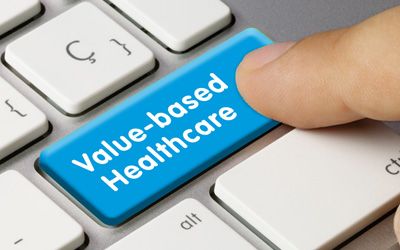
Why are we transitioning away from fee-for-service payment to adopt value-based payment? How can primary care providers make this transition and seamlessly assume risk?
Reimbursement for individual encounters, procedures, and services creates a burden for both the patient and the providers. In theory, the more you do, the more you are paid. In reality, taking a phone call, coordinating with a specialist, and researching medication alternatives are tasks the fee-for-service payment model does not typically cover. Another unintended consequence of this payment model is a rise in siloed care – physicians do not have the time or the incentive to coordinate.
In this series, we will discuss the range of tools and strategies to succeed in value-based care arrangements, including:
- Low-lift technology
- Care coordination tools
- Patient engagement
- Analytics and reporting
Low-lift Technology to Support Value-Based Payment
Practices have struggled to implement and update expensive Health Information Technology (HIT) systems such as electronic health records (EHRs) and clinical decision support systems (CDSS). While these tools can help providers manage patient data, identify high-risk patients, and track quality metrics, the implementation timeline often requires a significant upfront investment and lengthens the transition to value-based care.
After emergency investment in high-cost, high-touch telehealth platforms, many practices are confused and frustrated by the number of solutions entering the market. A plethora of AI tools is launching — from Google’s new partnership to applications that record the provider-patient discussion to eliminate paperwork.
Will these tools solve the immediate problems that underlay the reason the healthcare industry is moving to value-based care, like the need for:
- Proper care coordination
- Better patient compliance
- Greater focus on prevention
Eventually.
Limited resources and growing pressure to assume risk means that primary care practices, health plans, health systems and ACOs need solutions now. What do those solutions look like? They are tools that:
- Operate independent of the numerous EHRs used across the industry. Yet, enable upload and export from the practice’s existing technology stack.
- Require little training. If it’s not as intuitive as an iPhone, we don’t have the time to adopt it.
- Deliver measurable benefits quickly. Success cannot be measured in years. Patients are waiting for care, staff turnover is high, and costs continue to rise.
Can AristaMD deliver this solution? Our secure online platform:
- Operates independent of your EHR, within your EHR, uploads to your EHR, or communicates with your EHR using industry-standard interoperability tools like FHIR and HL7.
- Requires about an hour of training to get started. Yes, it’s as easy as an iPhone. However, AristaMD delivers self-service training and ongoing education to ensure you and your patients get the maximum benefit.
